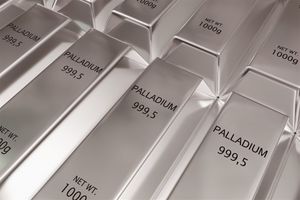First Excimer Platform Approved in Nearly Two Decades Offers Accuracy, Efficiency and Usability Advantages
Bausch + Lomb Corporation (NYSE/TSX: BLCO), a leading global eye health company dedicated to helping people see better to live better, today announced the U.S. Food and Drug Administration (FDA) has approved the TENEO Excimer Laser Platform for laser-assisted in situ keratomileusis (LASIK) vision correction surgery for myopia and myopic astigmatism (nearsightedness and nearsightedness with astigmatism)*.
“TENEO has been well received and is widely adopted in more than 50 countries around the world, and now U.S. ophthalmologists will benefit from this versatile laser," said Luc Bonnefoy, president, Global Surgical, Bausch + Lomb. “The precise engineering of this platform delivers a fast, small, technologically advanced machine that provides an exceptional experience for both surgeons and patients.”
TENEO offers several unique features not offered by previous excimer laser platforms.
Accuracy
The advanced eye-tracker operates at 1,740Hz, which is more than three times the speed of the laser’s repetition. This feature helps to ensure the laser ablation pattern is not negatively impacted by a patient's eye movement and helps achieve outstanding post-operative outcomes.
The platform’s high-speed laser operates at 500Hz, the fastest ablation time of all excimer lasers available in the United States at approximately 1.2 seconds per diopter.
Efficiency
The platform’s customizable graphical user interface touchscreen simplifies set up and allows surgeons to access to the patient data they choose without flipping through screens.
The cutting edge TENEO software treats the manifest refraction and does not require a nomogram therefore streamlining surgical planning by eliminating several steps prior to treatment. The logical, intuitive process requires three steps: select patient; choose and confirm treatment; treat.
In addition to these time saving advantages, the compact design of the TENEO (0.6m2 (6.8 sq. ft)) makes it the smallest excimer laser unit available in the United States, freeing up limited clinical space, which is a critical concern for many surgeons.
Usability
TENEO has been specifically engineered for the comfort of both surgeons and patients. It features a 360o swivelling microscope that adapts to surgeon height and posture, aiding in surgeon comfort.
The treatment bed comfortably accommodates patients of all sizes, swings out for easier access, and can be customized for optimal head positioning. The bed can be swivelled to be positioned for a second treatment device† so that patients do not have to get up and move, enhancing comfort and simplifying the surgical process.
“FDA approval of TENEO represents a major milestone for the advancement of laser vision correction technology in the United States,” said George Waring IV, M.D., ophthalmologist and founder and medical director, Waring Vision Institute, Mt. Pleasant, S.C. “In addition to the technological advantages TENEO offers, the open air feeling around the laser and quiet performance contribute to a comfortable experience for the patient.”
For more information, visit https://www.bauschsurgical.com/refractive/teneo/.
Indications and Important Safety Information for Technolas Teneo 317 Model 2 System
Indications for Use. The Technolas Teneo 317 Model 2 is indicated for laser-assisted in situ keratomileusis (LASIK) in: (1) Patients for the reduction or elimination of myopic astigmatism up to -10.00 D MRSE, with sphere between -1.00 D and cylinder between 0.00 and -3.00 D; (2) Patients who are 22 years of age or older; (3) Patients must have a stable refraction in the last 12 months, as documented by previous clinical recordings, i.e., the spherical and cylindrical portions of the manifest distance refraction have not progressed at a rate of more than 0.50 D per year prior to the baseline examination in the eye(s) to be treated.
WARNING. Danger of injury due to failure to observe the patient selection criteria! Failure to observe the contraindications and potential adverse effects may result in serious permanent patient injury. The usage of the laser system is limited to a specific field of applications. Observe the contraindications and potential adverse effects listed in the User Manual before selecting a patient and starting any treatment.
Contraindications. Contraindications of the Technolas Teneo 317 Model 2 include patients: (1) with any type of active connective tissue disease or autoimmune disease; (2) with signs of keratoconus, abnormal corneal topography, and degenerations of the structure of the cornea (including but not limited to pellucid marginal degeneration); (3) with significant dry eyes (severe Dry Eye Syndrome). If patients have severely dry eyes, LASIK may increase the dryness. This may or may not go away. Severe eye dryness may delay healing of the flap or interfere with the surface of the eye after surgery. It may result in poor vision after LASIK; (4) for whom the combination of their baseline corneal thickness and the planned operative parameters for the LASIK procedure would result in less than 250µ of residual corneal thickness from corneal endothelium; (5) with uncontrolled diabetes; (6) with uncontrolled glaucoma; (7) with active eye infections or active inflammation: (8) with recent herpes eye infection or problems resulting from past infections; (9) with known sensitivity to medications used for standard LASIK surgery.
Potential Risks and Side Effects: (1) Miscreated flap; (2) Subconjunctival hemorrhage or bleeding; (3) Wrinkles in flap that may require a flap lift; (4) Corneal erosion/abrasion, epithelia defect; (5) Elevated IOP; (6) Debris or foreign body under flap; (7) Epithelial ingrowth under flap; (8) Debilitating visual symptoms, especially at night; (9) Decreased or fluctuating visual acuity; (10) Decreased ability to see in low-light conditions; (11) Light sensitivity; (12) Dry Eye syndrome; (13) Inadequate treatment result; (14) Regression; (15) Corneal damage; (16) Posterior vitreous detachment or retinal detachment, floaters or vascular accidents; (17) Foreign body sensation or pain (initial postoperative days); also, potentially including chronic eye pain that is resistant to therapy referred to as neuropathic pain; (19) Infection/inflammation; (20) CTK (Central Toxic Keratopathy); (21) Medication intolerance; (22) Ptosis; (23) Cataract; (24) Ocular penetration; (25) Potential risk of psychological harm.
This is not all you need to know. Please see the User Manual for a complete list of safety information, including a full list of contraindications, warnings, precautions and risks.
Caution: Federal (U.S.) law restricts this device to sale, by or on the order of a physician.
About LASIK Surgery
LASIK surgery is a common vision correction procedure for people with myopia (nearsightedness), hyperopia (farsightedness) or astigmatism.1 An alternative to wearing glasses or contact lenses, the procedure involves using a special type of laser to change the shape of the cornea.1 Around 10 million Americans have had LASIK surgery since its approval in 1999 according to Marketscope.2 Approximately 550,000 LASIK surgeries are performed each year.2
About Myopia and Myopic Astigmatism
Myopia or nearsightedness is a common type of refractive error where close objects appear clearly, but distant objects appear blurry. According to the National Eye Institute, nearsightedness affects about 25% Americans and is often diagnosed in children between eight and 12 years of age and can worsen during the teen years. Little change may occur between ages 20 to 40, but sometimes nearsightedness can worsen with age. People whose parents are nearsighted may be more likely to have the condition.3
Astigmatism happens when the cornea or lens has a different shape than normal, making vision blurry.4 Astigmatism is common, with about one in three people having some degree of the condition, which happens along with myopia and hyperopia.5
About Bausch + Lomb
Bausch + Lomb is dedicated to protecting and enhancing the gift of sight for millions of people around the world – from the moment of birth through every phase of life. Its comprehensive portfolio of more than 400 products includes contact lenses, lens care products, eye care products, ophthalmic pharmaceuticals, over-the-counter products and ophthalmic surgical devices and instruments. Founded in 1853, Bausch + Lomb has a significant global research and development, manufacturing and commercial footprint with approximately 13,000 employees and a presence in nearly 100 countries. Bausch + Lomb is headquartered in Vaughan, Ontario with corporate offices in Bridgewater, New Jersey. For more information, visit www.bausch.com and connect with us on X, LinkedIn, Facebook and Instagram.
Forward-looking Statements
This news release may contain forward-looking statements, which may generally be identified by the use of the words “anticipates,” “hopes,” “expects,” “intends,” “plans,” “should,” “could,” “would,” “will,” “may,” “believes,” “estimates,” “potential,” “target,” or “continue” and variations or similar expressions. These statements are based upon the current expectations and beliefs of management and are subject to certain risks and uncertainties that could cause actual results to differ materially from those described in the forward-looking statements. These risks and uncertainties include, but are not limited to, the risks and uncertainties discussed in Bausch + Lomb’s filings with the U.S. Securities and Exchange Commission and the Canadian Securities Administrators, which factors are incorporated herein by reference. Readers are cautioned not to place undue reliance on any of these forward-looking statements. These forward-looking statements speak only as of the date hereof. Bausch + Lomb undertakes no obligation to update any of these forward-looking statements to reflect events or circumstances after the date of this news release or to reflect actual outcomes, unless required by law.
*Nearsightedness (myopia) between -1 and -10 diopters (D) with astigmatism between 0 and -3 D.
† Depending on the bed design of the second device.
References
- Mayo Clinic Web site, About LASIK Surgery. Accessed Jan. 3, 2024. https://www.mayoclinic.org/tests-procedures/lasik-eye-surgery/about/pac-20384774.
- WebMD: LASIK Surgery: Know the Rewards and Risks. Accessed Jan. 3, 2024. https://www.webmd.com/eye-health/news/20180727/lasik-know-the-rewards-and-the-risks.
- National Eye Institute fact sheet on nearsightedness. Accessed Jan. 3, 2024. Nearsightedness Fact Sheet (nih.gov).
- National Eye Institute: Astigmatism: At a Glance. Accessed Jan. 3, 2024. https://www.nei.nih.gov/learn-about-eye-health/eye-conditions-and-diseases/astigmatism.
- Cleveland Clinic: Astigmatism. Accessed Jan. 3, 2024. https://my.clevelandclinic.org/health/diseases/8576-astigmatism#:~:text=How%20common%20is%20astigmatism%3F,along%20with%20nearsightedness%20or%20farsightedness.
© 2024 Bausch + Lomb.
TEN.0016.USA.23
View source version on businesswire.com: https://www.businesswire.com/news/home/20240108249683/en/
Contacts
Media:
Kristy Marks
kristy.marks@bausch.com
(908) 927-0683
Investor:
George Gadkowski
george.gadkowski@bausch.com
(877) 354-3705 (toll free)
(908) 927-0735







